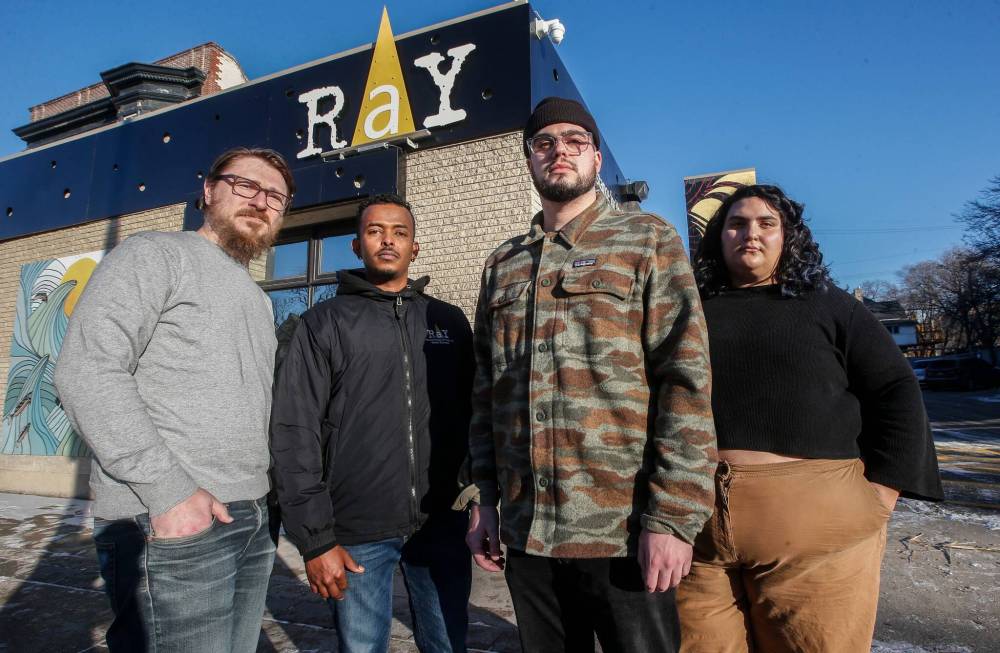Outreach agency research reveals geographic challenges in finding, safely helping growing number of city’s homeless
Advertisement
Read this article for free:
or
Already have an account? Log in here »
To continue reading, please subscribe:
Monthly Digital Subscription
$1 per week for 24 weeks*
- Enjoy unlimited reading on winnipegfreepress.com
- Read the E-Edition, our digital replica newspaper
- Access News Break, our award-winning app
- Play interactive puzzles
*Billed as $4.00 plus GST every four weeks. After 24 weeks, price increases to the regular rate of $19.00 plus GST every four weeks. Offer available to new and qualified returning subscribers only. Cancel any time.
Monthly Digital Subscription
$4.75/week*
- Enjoy unlimited reading on winnipegfreepress.com
- Read the E-Edition, our digital replica newspaper
- Access News Break, our award-winning app
- Play interactive puzzles
*Billed as $19 plus GST every four weeks. Cancel any time.
To continue reading, please subscribe:
Add Free Press access to your Brandon Sun subscription for only an additional
$1 for the first 4 weeks*
*Your next subscription payment will increase by $1.00 and you will be charged $16.99 plus GST for four weeks. After four weeks, your payment will increase to $23.99 plus GST every four weeks.
Read unlimited articles for free today:
or
Already have an account? Log in here »
Hey there, time traveller!
This article was published 28/11/2023 (695 days ago), so information in it may no longer be current.
The growing number of homeless Winnipeggers living in riverbank encampments proves the need for accurate data about where they are, what kind of drug-overdose support they have and how outreach workers can safely help them, a new report says.
A lack of publicly available data on homeless outreach and overdose-response locations was the impetus for the 16-page analysis of street outreach work done by West Broadway’s Resource Assistance for Youth that was released Tuesday.
The report’s most striking finding is about 76 per cent of homeless encampments in the city are located within 500 metres of a river, and many of the camps are even closer to rivers (45 per cent within 100 metres of the water).
JOHN WOODS / WINNIPEG FREE PRESS Resource Assistance for Youth (RAY) staff, from left, Nicholas Friesen, Aaron Ghebrehiwot, Matthew Altieri and Adi Farage outside their Sherbrook St office in Winnipeg Tuesday.
Other revelations in the report, such as how the majority of outreach calls occurred in the West Broadway and Polo Park areas, and how about 70 per cent of overdose reversals and naloxone administration by outreach workers happened more than 1,500 metres from a Winnipeg Fire Paramedic Service station, weren’t surprising based on what outreach staff have been telling them, said Matthew Altieri, grants and information co-ordinator at Resource Assistance for Youth.
But they didn’t expect to find out so many people they need to reach are living in hard-to-reach spots near the rivers — not necessarily in large encampments, but sometimes in smaller camps that are geographically spread out. The living situations are not safe for the people living in them, nor for the workers arriving to help.
“That’s something that really made us rethink how we’re providing services and how we can better our own services to (help) the individuals that we’re trying to reach,” said Altieri, one of the co-authors of the report.
The report uses a combination of GPS tracking and outreach expertise to map out where help is most often needed across eight neighbourhoods served by the agency’s team, so it makes sense that the majority of the tracked hot spots are in West Broadway. RAY is located on Sherbrook Street.
The findings are only the first step, and raise the question of how outreach groups can more effectively find and communicate with people who need them, Altieri said.
More homelessness-support services could be introduced in and around pharmacies and other places where naloxone is available, since many of the areas with greatest need for outreach turned out to be less than 200 metres away from where naloxone kits are provided, the data shows.
But agencies need evidence-backed data to inform public policy, and stretched-thin non-profits often don’t have the capacity to do that kind of research. Altieri said he’s hoping other community organizations and governments will collaborate with them and start collecting better data.
“Before we can really get at supporting these people experiencing homelessness and confronting the opioid epidemic, we really do need better data sets and evidence, because we haven’t even reached that point. We have no evidence to look at, and community organizations and the government cannot determine the next steps without having that evidence.”
To conduct the research, which was unfunded, RAY workers used GPS trackers when they travelled in their outreach van, and the research team collected and interpreted that data. But adding data collection to front-line workers’ already tough jobs increased their workloads, Altieri said.
“We’re already working with limited budgets, limited workers, and to have your street outreach team also going out and doing half-time research, it does put a strain on them as well, so that’s why we’re kind of hoping to get some collaboration with other groups so that we can increase the capacity of this research project.”
katie.may@freepress.mb.ca

Katie May is a multimedia producer for the Free Press.
Our newsroom depends on a growing audience of readers to power our journalism. If you are not a paid reader, please consider becoming a subscriber.
Our newsroom depends on its audience of readers to power our journalism. Thank you for your support.












